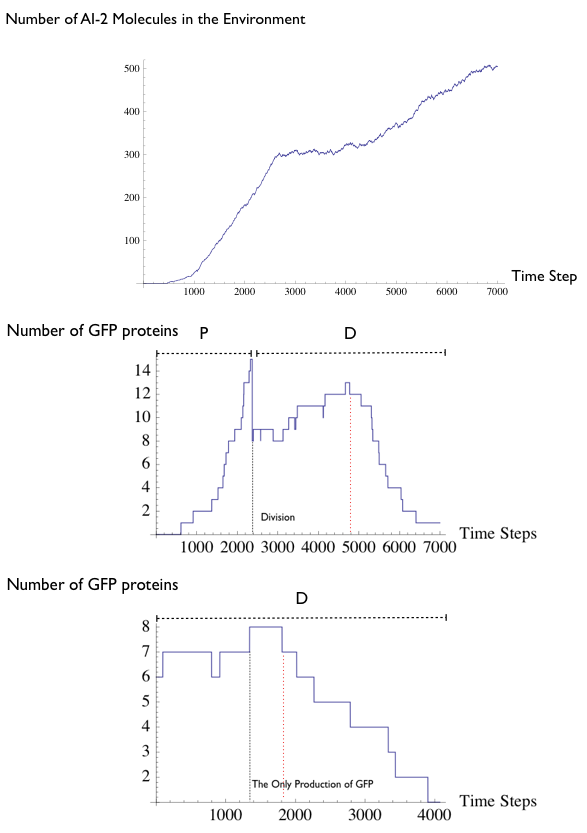Team:Calgary/9 October 2009
From 2009.igem.org
(Difference between revisions)
| Line 216: | Line 216: | ||
<br> | <br> | ||
<div class="heading"> | <div class="heading"> | ||
| - | + | Modeling Paper: | |
</div> | </div> | ||
<br> | <br> | ||
<div class="desc"> | <div class="desc"> | ||
</html> | </html> | ||
| - | + | This paper is being done very soon, I just share some of the new results discussed in this paper here: | |
| + | |||
| + | As we all know, bacterial cell division is the process by which a bacterial cell creates two genetically identi- | ||
| + | cal daughter cells. It takes approximately 20 minutes for a newborn bacterial cell to reach to the | ||
| + | next division stage in a proper environmental condition. Within this 20 minutes, parental genetic | ||
| + | materials and its essential components and organelles are duplicated and distributed between the | ||
| + | two daughter cells. However the chemicals available within the parent cell are not duplicated, | ||
| + | whereas they are equally distributed between two daughter cells. One of the characteristics of | ||
| + | bacterial populations is that they increase in size exponentially in optimum environment. How- | ||
| + | ever, toxic waste products and competition for food and nutrients reduce the speed of population | ||
| + | growth and stabilize the number of bacteria in the population. Having this function implemented will help us to observe more realistic emergent properties in the system: | ||
| + | |||
| + | |||
| + | [[Image:cellDivision.png]] | ||
| + | |||
| + | This figure demonstrates the comparison of production and degradation of GFP proteins in parent cells and newborn cells. The First graph | ||
| + | shows that the number of AI-2 molecules in the environment is continuously increasing over the 7000 steps. The second | ||
| + | graph shows the number of GFP proteins within one of the parent cells (indicated by ”P”) in the simulation. This cell | ||
| + | keeps producing GFP proteins up to the division point. After that the newborn daughter cell (indicated by ”D”) continues | ||
| + | the production of GFPs, however it does not last very long as this cell reaches to the point (indicated by red line) that | ||
| + | recognizes the high concentration of AI-2 in the environment and cancel the production of GFPs. After this point, the | ||
| + | degradations of GFPs occur. Graph 3 demonstrates the number of GFP proteins in one of the newborn cells in the | ||
| + | simulation and implies that the production of GFP proteins occurs once (indicated by black line) in this cell. However | ||
| + | after very soon the cell changes its biological cascade and hence the inherited GFP proteins and the produced one are | ||
| + | degraded. The reason for observing this behavior is since the concentration of AI-2 molecules in the environment is high | ||
| + | by the birth time of daughter cells, they switches to the second biological cascade faster than their parent cells that keep | ||
| + | producing GFPs for more than 2000 time steps. | ||
| + | |||
<html> | <html> | ||
Revision as of 22:49, 20 October 2009
UNIVERSITY OF CALGARY

 "
"











